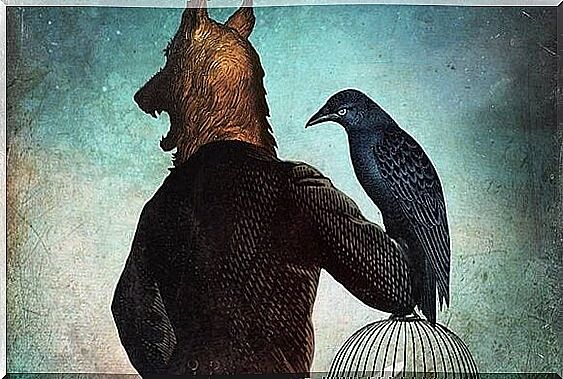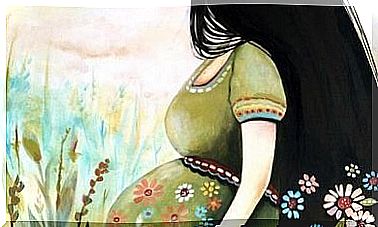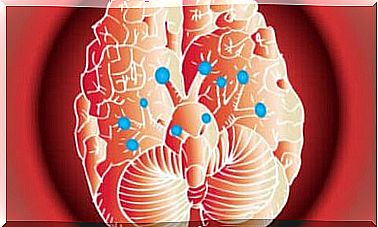Do You Know How To Defend Yourself Against Passive-aggressive Behavior?

Passive-aggressive behavior is characterized by addiction and manipulation. This cryptic art associates negative attitudes and defeatism, which is so permeated that it leads others to a very deep psychic and emotional wear and tear. Likewise, these traits are characteristic of a provocative profile, unfortunately very common and which makes any dynamic of a couple, friendship or family bond difficult.
Many of us know how to identify any aggressive behavior. Everyone has this clinical eye which allows us to warn us that this person, by his attitude, his behavior or his way of communicating, spreads a certain violence, a certain air of superiority and aggressiveness more or less explicit.
“Fear usually manifests itself in two ways: through aggression or through submission.”
-Paulo Coehlo-
However, we do not always see the passive-aggressive coming because some of his attitudes are not so obvious. Reactions that often oscillate between the charismatic and the reactionary. His hostility hidden behind irony, sarcasm and false “good manners” which nevertheless attract attention. It is a type of personality that leads to confusion, to misunderstandings, until we realize the discomfort that this particular person creates in us.
On the other hand, it must be said that until a few years ago, the passive-aggressive personality was identified as a personality disorder. However, this clinical label disappeared in the fourth edition of the DSM (
In the 1990s, this supposed disorder was overdiagnosed and the controversy was such that a consensus was reached: it did not make sense to regard resistance, pessimism or concealed aggressiveness as pathological. It was only appropriate in the event that a person made use of this attitude on a permanent basis, thereby revealing a dominant, pessimistic and very incapacitating attitude.

Characteristics of passive-aggressive behavior
We can all exhibit passive-aggressive behavior at some point. There are occasional triggers that can generate, almost without realizing it, latent hostile behavior, a type of reaction that shows a certain irritability, a certain bad mood. So, it is important to always understand what is behind the passive-aggressive behavior.
Now let’s see in detail what are its most common characteristics.
Passive-aggressive language
Passive-aggressive behavior always masks a camouflaged anger that is poorly concealed and which is expressed especially through language. The presence of allusions, which hurt and which take by surprise is very common. The use of confused and even contradictory messages is also usual, as well as the following sentences:
- “I do not understand what you want to say to me” (whereas they know very well what one wants to make them understand).
- “As you wish” (affirmation with which they abandon the discussion as quickly as possible to avoid sincere and direct emotional communication.)
- “But why are you putting yourself in this state? You take it all wrong. ” (The passive-aggressive person uses his calm to push his interlocutor to extremes by humiliating him.)
Behavioral hostility and procrastination
At first glance, these people may appear lovable and approachable, but this appearance falls as soon as you get to know them better and their true face appears.
- They are fierce and very critical of everything around them.
- They are often disrespectful, a trait that makes them proud because they see themselves as protesters, rebels …
- They are addicted to making others feel guilty about almost everything.
- The two deepest roots of their hearts are resentment and bad humor.
- They don’t like authority or receiving suggestions from others.
On the other hand, and to accompany this hostility, they have this unfortunate tendency to postpone everything until tomorrow. They don’t keep what they promise, they never finish what they start, they forget everything and don’t take care of what they have, be it objects or personal relationships.

Emotional addiction
It is curious to see how their behavioral hostility, their hostile and provocative attitudes are also strongly linked to their intense emotional dependence on others.
Their “I despise you but I need you” is undoubtedly their most characteristic personal motto, a trait which in reality hides a fragile being and diminished by his insecurities, a person who needs others but who lives in the most bitter layer of its shell.
How to manage a passive-aggressive?
Behind passive-aggressive behavior, there are multiple doors behind which often lie very complex realities: depression, anxiety disorder, attention deficit hyperactivity disorder (ADHD), low self-esteem. self, difficult childhood and even biological or environmental factors.
“Those who fester in aggressive competition lose their raison d’être and more importantly: their strength.”
-Julián Marías-
If we are aware of our passive-aggressive attitude, the ideal is to look for a good therapist who helps us to understand and to channel this anger and this frustration. For that, nothing like taking into account these basic strategies:
- Try to understand why you are doing this and respond accordingly.
- Think before you speak and before you act.
- Identify what affects you the most, what worries you and try to deal with it.
- Demolish your negativity.
- Practice mindfulness.
- Cultivate your Emotional Intelligence.

On the other hand, if in your closest surroundings you are forced to have a relationship with a passive-aggressive person, one of the best ways to do this is to reduce their impact on you by ignoring them. In general, the passive-aggressive is someone with low self-esteem and very little emotional assertiveness, someone who doesn’t know what to do when they feel their behavior is having no effect.
The more that person sees us affected by their words and attitudes, the more power they will have. But if she feels that she is of no value to you, she will stop insisting and her biological impact will be less. However, as we have seen, it is always important to know what is behind this type of behavior. If the passive-aggressive person is a loved one, they can be encouraged to seek professional help.
To conclude, let’s remember where this term came from and when it was first used. It was during World War II, when a group of military psychiatrists noticed a certain defiant behavior in some soldiers, a certain passive and negative resistance to orders. What was behind these soldiers was actually post-traumatic stress disorder.
Also read:
Images by Christian Schloe








